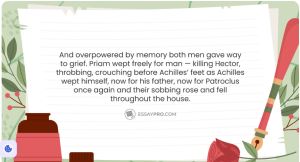Difference Between Narrative Poems and Other Poetic Forms
Difference Between Narrative Poems and Other Poetic Forms
What makes narrative poetry stand out is pretty simple: it tells a story. Other poems might drift through emotions or linger on a single image, but narrative poems move and move. They’re less about atmosphere and more about action. That focus on storytelling is the defining feature that separates narrative poetry from lyric and prose poems. Let’s break down what each one brings to the table and what makes them unique.

Narrative Poetry vs. Lyric Poetry
If you’re reading a poem that feels like someone’s private journal, that’s probably lyric poetry. It’s all about expressing deep emotion: one moment, one voice, one feeling. Now think about how that compares to narrative poetry that gives you a full arc with conflicts and twists. That’s the most important point about the difference between narrative poetry vs. lyric poetry. Shortly put:
Narrative poetry tells a story with a beginning, middle, and end
Lyric poetry zooms in on a personal emotion or reflection
Narrative poems might include dialogue, characters, and a plot
Lyric poems focus more on rhythm, tone, and mood than action
Narrative Poetry vs. Prose Poetry
Prose poetry looks like a paragraph you’d find in a novel, but its language feels poetic. That’s why prose poems are kind of shapeshifters. Even if they skip the line breaks and structure we typically expect from poems, it still leans into imagery and sound. Narrative poetry stays in verse, though. It gives you a structured plot and a full story to follow. Here’s how they compare:
Narrative poems follow a line-and-stanza structure, often with rhyme or meter
Prose poems use block paragraphs but still sound poetic
Narrative poetry includes a clear story arc, with characters and events
Prose poetry focuses more on sensations, abstract ideas, or images than on story
Narrative Poem Examples
Narrative poetry examples are everywhere in classic and modern literature. Some of them have stood the test of time, and it’s definitely for a good reason. These poems tell detailed stories that are full of both action and emotion. In this section, we’ll take a look at some of the most famous narrative poem examples ever written that show exactly how powerful storytelling in verse can be.
The Iliad by Homer
The Iliad is a war story, but it’s not just about battle strategies. Homer tells us about pride, rage, grief, and what it means to be remembered. The poem drops you right into the middle of the Trojan War, where the Greek warrior Achilles is furious at his own army for disrespecting him. He refuses to fight, and that choice has massive consequences. While armies clash outside the walls of Troy, gods argue in the skies and heroes face off in brutal duels. The Iliad is about the cost of anger and the fragile line between glory and destruction.
The Canterbury Tales by Geoffrey Chaucer
The Canterbury Tales follows a group of pilgrims on their way to Canterbury, each taking turns telling a story along the journey. Some are funny, some are serious, and a few are surprisingly dark. Through these tales, Chaucer tells us about the beliefs and flaws of the middle ages. Stories by each character reveal just as much about them as the world they live in. It’s one poem, but it feels like a whole collection of voices and viewpoints packed into one trip.
The Rime of the Ancient Mariner by Samuel Taylor Coleridge
Source: h
